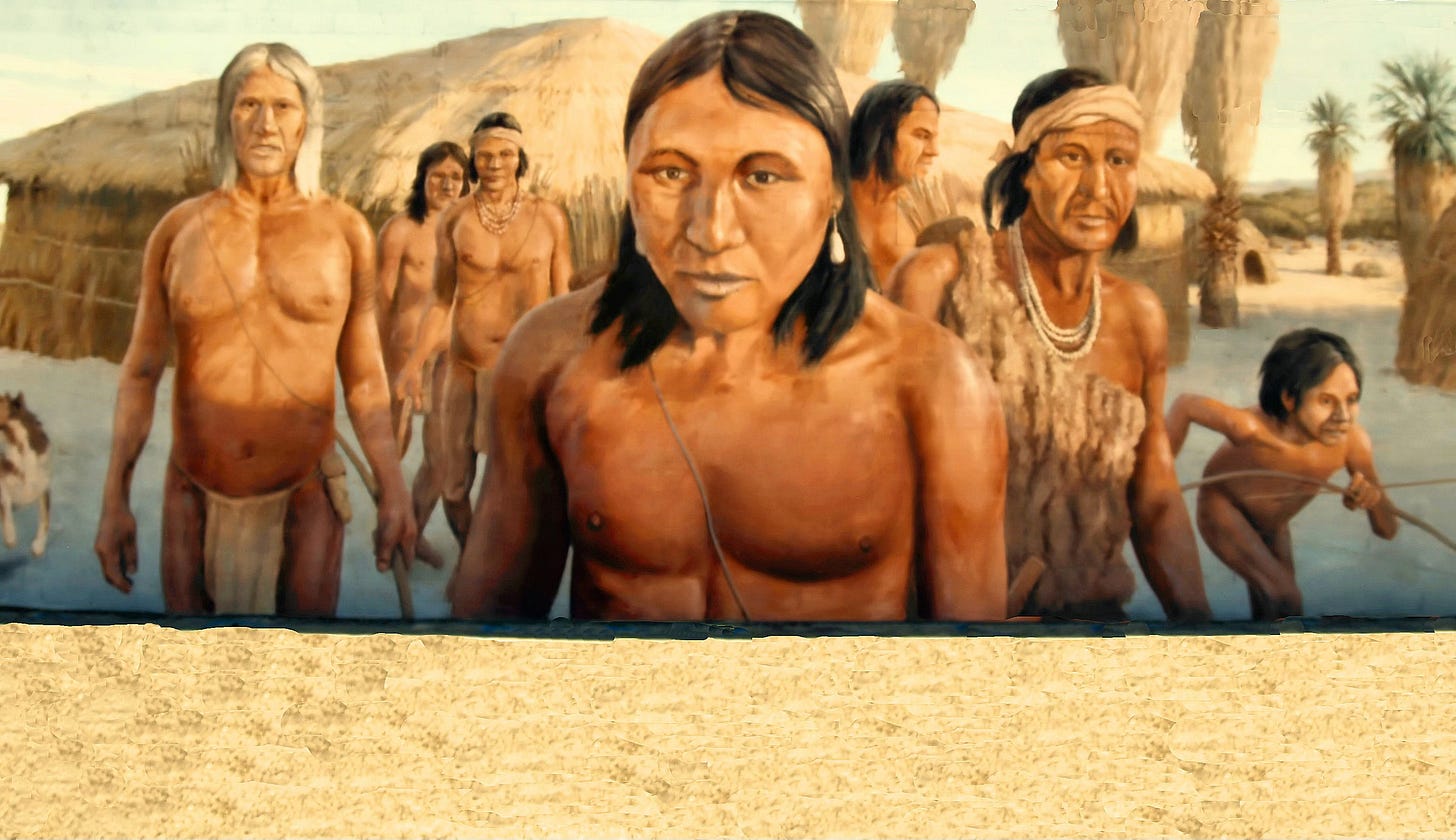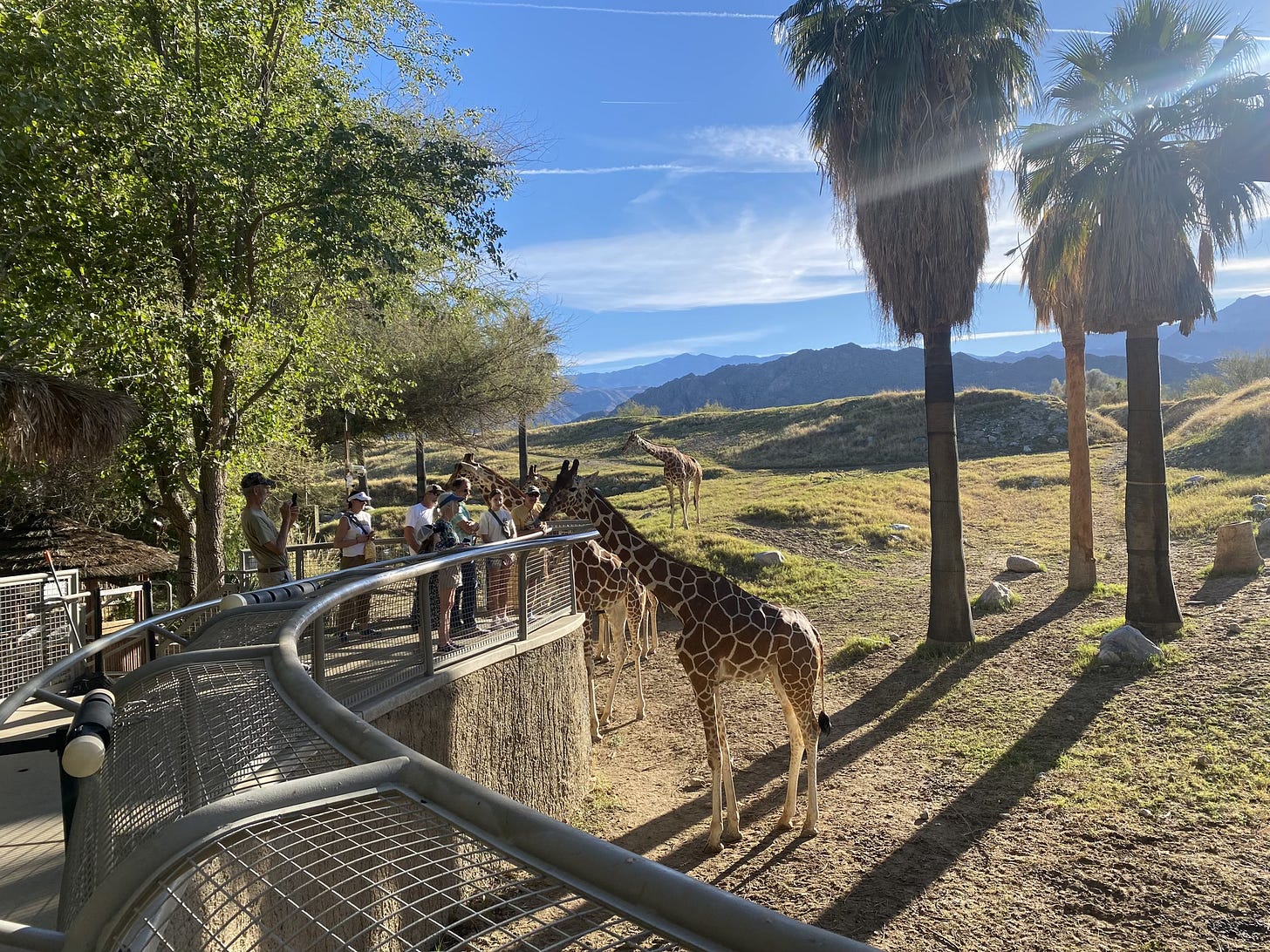Palm Springs, California has close connections with Hollywood, California
Today, the resort towns of Greater Palm Springs which occupy that area retain their close connection with motion picture luminaries.
In the mid-1800s, people traveling through a desert landscape which blanketed part of present-day California stopped at an oasis to rest, water their horses and refill their canteens. Not long afterward, a way station along a stage coach route was built there.
Fast forward to 1915, when the producer of a silent motion picture chose the place to film Peer Gynt, a fantasy story adapted from a drama written by the Norwegian playwright Henrik Ibsen. Soon, Palm Springs” vacant valleys, boulder-strewn mountains and long stretches of sand attracted other movie makers. It also attracted the Hollywood stars who acted for them.
The resort towns of Greater Palm Springs which occupy that area retain their close connection with motion picture luminaries, other celebrities and some -- like me -- who go to check out what makes the location so popular among those who visit or live there.
Located about 100 miles from Los Angeles, the site also is known for its dry, sunny climate. Add the collection of mid-20th century construction styles designed by famous architects, a strong arts and cultural scene, and long list of recreational activities and it’s not hard to understand why Hollywood types, well-to-do business people, retirees and others seek out its attributes.
An upscale lifestyle pervades Palm Springs, California
My first hint of the upscale allure of Greater Palm Springs, and the equally upscale lifestyle of many who live there, came in the roadside billboards I spotted as I got near to the destination. A number of them advertise facelift, breast enhancement and other cosmetic procedures intended to fight back against the natural results of the aging process. Reaching the end point of my drive, I began to notice an abundance of banks, investment companies, upscale shops and other businesses that would tempt people with plenty of money to spend.
I also took note of the prevailing architectural styles which share many attributes even as each structure lays claim to its own unique characteristics. Many homes are described as mid-century modern, harking back to the time when Hollywood types and others couldn’t wait to lay claim to Greater Palm Springs as their second home site.
Among common features of this design are expansive windows, which help bring the outdoors into the houses; open floor plans, in keeping with the expansive natural surroundings, and neutral colors that fit well into those which Mother Nature has applied outside.
In addition to the homes that Hollywood types built, the movie star connection also becomes obvious in the names of a number of streets in the area. Frank Sinatra, Bob Hope, Jack Benny, Kirk Douglas and Dinah Shore are among those so honored and recalled.
Native Americans inhabited the Palm Springs, California region for thousands of years
Other thoroughfares evoke the Agua Caliente band of Cahuilla Indians who inhabited the region for thousands of years, and who remain an important presence. In fact, much of the territory is located within their reservation.
Indian Canyon, part of the ancestral home of local Native Americans, also serves as a reminder of their lasting influence. Among evidence of their long existence are rock art, irrigation ditches, food preparation areas and walking trails.
The Agua Caliente Cultural Museum recalls the time when the people for whom it is named lived close to the natural hot mineral-rich springs that proliferated there. Some resorts and spas continue to offer people the opportunity to experience their soothing, and some say curative, powers.
The museum is home to art, artifacts and other memorabilia which represent the tribe’s history and culture. Among items in the Objects and Artifacts Collection are woven baskets, lovely pottery, textiles and other items. The Archives displays rare books, photographs, oral histories and audiovisual materials.
A world-class collection of airplanes greets visitors to Palm Springs, California
Before visiting the Palm Springs Air Museum, I wondered what a collection of both vintage and newer planes has to do with its desert location. Then I learned that years ago, a man in Minnesota who bought and restored World War II aircraft moved them to their present location. They’re scattered around a 17-acre campus adjacent to an indoor display area. Another local tie-in is posters hanging outside which identify “Fallen Heroes,” residents of the region who lost their life in battle.
Before entering, I was greeted by a statue of the Tuskegee Airmen, a group of Black fighter and bomber pilots, and others, who belonged to a designated group before President Harry S. Truman issued an executive order ending segregation in the armed forces. Indoors, I took more time than I had anticipated enjoying exhibits which are much more impressive than I had expected.
A dramatic diorama realistically recreates the Japanese attack on Pearl Harbor. Flight simulators replicate airplane rides and demonstrations. Volunteer experts, many of them veterans, describe the displays and share their experiences.
A personal favorite was a collection of videos of Bob Hope performing for troops during World War II and beyond. Beginning in 1941 and continuing for nearly 50 years, Hope visited military camps and war zones, using comedy, song, dance and attractive female entertainers to bring a bit of joy into otherwise drab, and often dangerous, lives.
Speaking of taking to the air, another high point of my trip – both figuratively and literally – was a ride on the Palm Springs Aerial Tramway. That cable car has several claims to fame, beginning with the fact that it’s the largest rotating sky tram in the world. As it transports passengers from the floor of Chino Canyon to the mountain station 8,516 feet above it, a 10-minute commute, the gondola gently turns. That provides breathtaking views of rugged cliffs, the valley floor, towering pine and fir trees that form a shaded forest environment, and San Jacinto Peak which looms overhead. In terms of biodiversity, the ride passes through five distinct climate zones, mimicking a journey from Mexico to Canada.
At the top, along with spectacular views, riders find the aptly named Peaks Restaurant, nature exhibits and hiking trails. The temperature can be 30 to 40 degrees cooler than the desert heat which prevails about 2.5 miles below.
Palm Springs, California’s Living Desert Zoo demonstrates the variety of wildlife that can exist in a barren landscape
A very different setting greeted me at the Living Desert Zoo and Gardens. While the wildlife there represents more than 150 species from around the world, I have seen many of them elsewhere. What attracted my greatest interest was the term “living desert” itself, with its implication that a barren locale with little precipitation can support much life. Boy, is that correct!
This botanical garden contains a tapestry of plants, many of them rare, which represent the diverse flora of arid regions throughout the globe. They include thorn forests which grow in East Africa, Joshua Trees from the Mojave Desert in California and Nevada, and other foliage that usually is at home in far-flung locales.
If you go
If you’re in the mood for splurging on a hotel room, the Palm Springs area offers a long list of choices. The Ritz-Carlton Rancho Mirage luxury hotel combines elegance and stunning valley views with holistic spa rituals.
Opened in the 1930s, The Colony Palms has a colorful history involving mobsters, athletes, politicians, and movie stars. This Spanish colonial gem blends Hollywood glamour with touches of art-deco design.
At the budget-stretching end of the range, the Vagabond Motor Hotel is well located near a number of attractions. Furnishings in guest rooms at the Skylark Hotel recall the mid-20th century era.
At dinner time, I was impressed by the food and décor at Porta Via even before I learned that it supports sustainable farming and serves organic and locally grown produce. The menu includes several entrée salads ($18-$23) and pasta dishes ($26-$30).
For more information call 800-967-3767 or log onto visitgreaterpalmsprings.com.
Victor Block retains the travel bug after gallivanting throughout the United States and to more than 75 other countries worldwide and writing about what he sees, does, and learns. He believes travel is the best possible education and claims he still has much to learn. He loves to explore new destinations and cultures, and his stories about them have won many writing awards.









